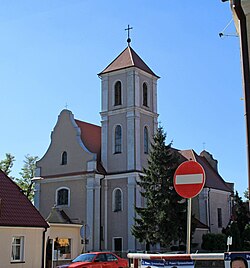Xions
Książ Wielkopolski
Place in Greater Poland Voivodeship, Poland
Książ Wielkopolski (Polish pronunciation: [ˈkɕɔ̃ʐ vjɛlkɔˈpɔlskʲi]; German: Xions, 1940–43 Tiefenbach, 1943–45 Schonz) is a town in Śrem County, Poland, with 2,738 inhabitants (2010).
You can help expand this article with text translated from the corresponding article in Polish. (May 2013) Click [show] for important translation instructions.
|


